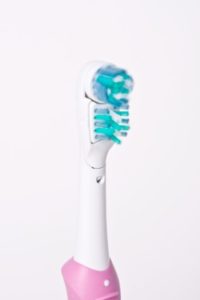Brushing Up On Dental Hygiene Basics


Let’s start with brushing. Did you know that you should be brushing twice a day, for two minutes each time? Any less than that may not be effective enough at reducing plaque and tartar accumulation, but more than that doesn’t seem to confer any additional benefits. It’s also important to angle the toothbrush at about 45 degrees toward the gum-line to brush the teeth thoroughly.
Flossing is another important component of an oral hygiene routine that will remove bacteria from the areas in your smile that you can’t reach with a toothbrush and give an extra boost to your efforts to keep your gum-line healthy.
When you are conscientious about your oral hygiene habits, you’ll go a long way toward safeguarding your oral health. That doesn’t mean that you never will need to see a dentist, though. Routine professional dental care is the keystone of a healthy smile and provides important support to your own efforts to keep your smile healthy.
Even if you are brushing properly and frequently enough, you still should get a teeth cleaning from a hygienist at least every six months. Brushing and flossing alone are not sufficient to eliminate oral bacteria, and prophylaxis (the technical term for these cleanings) helps to remove any lingering plaque or tartar buildup, which can cause a variety of oral diseases.
In addition to the teeth cleaning, routine appointments also involve exams in which the provider will inspect your teeth and gums, looking for signs of issues like gum disease or tooth decay. When such problems are detected early, they can be more easily treated and the damage to the smile can be contained.
Think you have your oral hygiene basics down? Check in with one of our knowledgeable professionals to make sure that you’re doing everything possible (and in the right way) to preserve and protect your smile and your well-being.
If you’re overdue for a teeth cleaning, contact our office today!